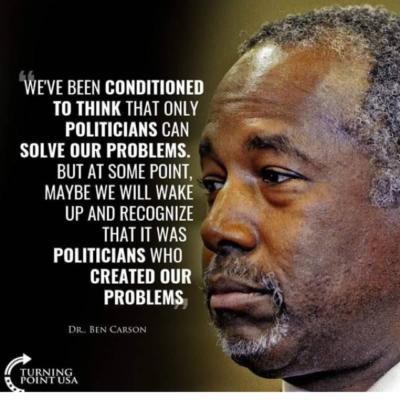The Fed is about to cut rates for the first time since 2008. The Fed is expected to cut the fed funds rate by a quarter point today. The move is being speculated about as preventative. The July jobs report is expected Friday. It is expected to show solid job growth at about 170,000. Nearly a third of the S&P 500 companies report earnings this week.
Economic performance…
2018 ended with the unemployment rate at 6.7%. Today it is about 3.7%. Unemployment is near a 50-year low. Inflation by the Fed’s preferred measure is still, at 1.8% which is below the 2% annual target. Consumer spending is growing, and the economy is still growing at a rate some economists regard as faster than sustainable.
The Fed may be stopping the runoff rate of bonds from its balance sheet this year. Translation: they are stopping the quantitative tightening taking place. However, the rest of major developed-world central banks are still in quantitative easing mode. There are $13 trillion of global government bonds now producing negative yields. Governments are paying financial institutions to take money.
The QE game…
The questions are: How low is too low for interest rates? And, what is the end game for QE? The Fed tried to normalize monetary policy. The maneuver is difficult when the other central banks are doing the opposite. There is a reciprocal relationship.
What happens is that investors chasing risk-free yields end up in the U.S. Treasury market. There is nowhere else to go for positive risk free yields. That global bank QE activity buoys the U.S. Treasury market and the U.S. dollar. That is despite rising federal deficits. It is difficult for the dollar’s value to decline in an environment where QE policies are abundant globally.
Quantitative easing is like printing money. But it is for financial institutions only. In that, it differs from the Weimar Germany version of printing money. As excess reserves are abundant in the system, they find shelter in government bond markets. In the U.S. QE worked. Excess reserves first found homes in Treasuries and mortgage bonds. Then they trickled down to riskier fixed-income instruments. It’s like pulling the economy out of a deflationary hole. It works by the force-feeding of credit into an over leveraged system. The system was otherwise going to deleverage naturally.
Nuts and bolts…
As credit spreads narrow, interest rates remain suppressed under QE. That helps riskier borrowers. Riskier debtors might default or not be able to roll over their debts. Under QE the Fed did monetize Treasury debt. That is one degree removed from outright monetization. If primary dealers bought newly issued Treasuries, at one time, they knew that most would be immediately taken by the Fed. That dynamic allowed cheap federal government deficit spending.
The question of monetizing federal debt came up in public hearings where Fed chairmen were present. The answer was always, “That’s not why we are doing this!” Sure, that may not be why… but intended or not it did facilitate deficit spending at lower interest rates. It guaranteed bids for new Treasury debt placement. You be the judge about the Fed Chair’s past statements.
Excess reserves have a de facto spending and credit multiplier effect. Deficit spending trickled through the economy facilitated by QE. People got paid, they deposited the money in their banks and banks lent much of that money out. It was spent again, and the credit multiplier cycle stimulates economic activity in the U.S.
The rate cut is all baked in…
The world waits for the Fed cutting the fed funds rate by 25 basis today at 2:00 PM. The investment community, helped by global central bank QE policies, has already made its response. It has driven the 10-year Treasury yield from 3.24% in early November to 1.94% in June. That’s down 1.3% in seven months.
The market has delivered a large cut in longer term risk-free rates in the U.S. Still, the dollar is still firm. Is the Treasury market forcing the Federal Reserve to cut the fed funds rate? It is becoming more in tune with market rates. The question becomes: Are those rates market driven if global central bank QE policies drove them there? It seems pretty obvious this is a political game as opposed to management in the best interest of the American people. We are outside the Fed’s own guidelines for action.
There has not been a 10-year government bond that has printed a negative yield of a whole percentage point… yet. There is one that has come close; the Swiss have been at -0.76%. German bunds closed last week at -.32%, the Netherlands at -0.21%, Japan at -0.13%, France at -0.07% and Belgium at -0.01%. More nations may join the club.
Central bank policy cannot deal with structural and demographic issues…
Central banks policy has its limits. Europe and Japan have some very serious structural and demographic issues. Central-bank policy alone cannot solve them. By trying to do too much, QE may backfire. Administering more monetary medicine after it stops working probably isn’t the way to proceed.
For now, the dollar remains strong. Returns from U.S. financial markets continue to be better than anything available in Europe or Japan. The comparisons favor the U.S. That, however, does not mean the U.S. is in a good place. If there is a U.S. trade deal with China, a big if, global trade volumes may improve. If that happens the dollar may sell off.
Conclusion
That would help emerging markets. There is an inverse relationship between the dollar and dependence on trade with the U.S. A China trade deal will help the U.S. trade deficit. That would be a positive for the dollar. Then again, there’s the China, Russia, EU, Iran meeting last weekend which sounds like a direct attack on the US dollar. At a minimum it erodes the US dollar’s world reserve currency dominance.
